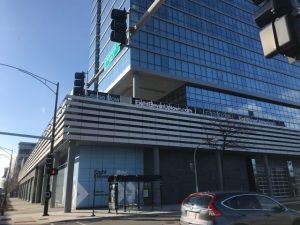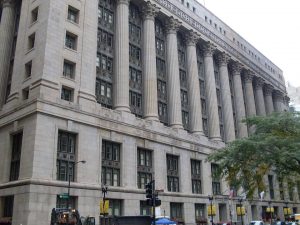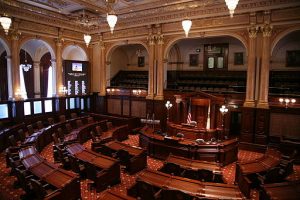On Thursday the Chicago City Council voted to recommend ending eight tax increment financing districts, sending almost $9 million to the city, the school district and other taxing bodies.

Ald. Ameya Pawar (47th), an outspoken critic of TIFs called the elimination of these districts a positive step toward the necessary reform of the TIF program.
“This has to happen incrementally,” Pawar said. “I realize that some people would want us to just flip a switch and [eliminate TIFs], but that is just not possible.”
CivicLab and a group of interested individuals are researching the TIF process in the 27th Ward.
According to an Oct. 31 press release from the mayor’s office, about $8.9 million will be transferred from inactive TIF districts to various taxing bodies. The City of Chicago will receive almost $2 million, and Chicago Public Schools is due $4.5 million.
The eight districts to be closed are slated for the chopping block because of a lack of TIF funded projects in the district, said Housing and Economic Development Deputy Commissioner Michael Jasso.
Tax increment financing is an economic development tool that freezes taxable property values in a specific district for up to 23 years. When property values in the district go up, the amount going to schools and the city stays the same, and the excess money is funneled to a mayor-controlled fund designated for economic development in the area.
Originally designed as an economic aid for economically depressed areas, TIFs have been criticized for failing in neighborhoods of need and favoring areas that don’t need the help.
“The TIF designation is a promise from the government to encourage development in the area,” said University of Illinois-Chicago Prof. David Merriman.
Merriman, who has studied TIFs, criticized the program and said it mostly serves to redistribute development that would have happened anyway, not create new projects.
“It is certainly appropriate to scrutinize TIFs on a regular basis and close TIFs that have either accomplished their goals or [are inactive],” he said, while calling for the city to do “a lot more cost-benefit analysis.”
Pawar agreed that the shuttering of these eight TIF districts was a good example of the kind of analysis and action the city needs to do more of in regards to the program.
The largest of the districts to be closed is the 72nd Street and Cicero Avenue Redevelopment Project Area. At the end of 2010 that TIF had a $2.4 million balance according to the city’s budget department.
The 72nd and Cicero TIF is a good example of most of the TIFs slated to be terminated: It was created for a specific purpose and has now outgrown its usefulness.
Created in 1999 to help improve facilities at the Ford City industrial complex, in an effort to get Tootsie Roll to keep its manufacturing in the area, the 72nd and Cicero TIF succeeded, but now sits unused, collecting funds with no project to spend them on.
While that is the pattern for almost all of the TIFs do be closed, the Lakeside Avenue and Clarendon Place TIF in Uptown is the only one that has never been used at all.
“The TIF was created for the [Charter Barclay] Hospital project, but that project was abandoned,” said Abby Sullivan, who handles zoning and financial issues for Ald. James Cappleman (46th). “It is a really small TIF, there wasn’t anything else there that called for a potential project.”
At the end of 2010 the Clarendon/Lakeside TIF had a $290,530 fund balance.
“Ald Cappleman is interested in TIFs that have clear economic potential, and this one really doesn’t,” she said.
According to the Cook County Clerk, in 2011 Chicago’s 163 TIF districts collected $454 million, in 2010 that figure was $510 million.












Be First to Comment